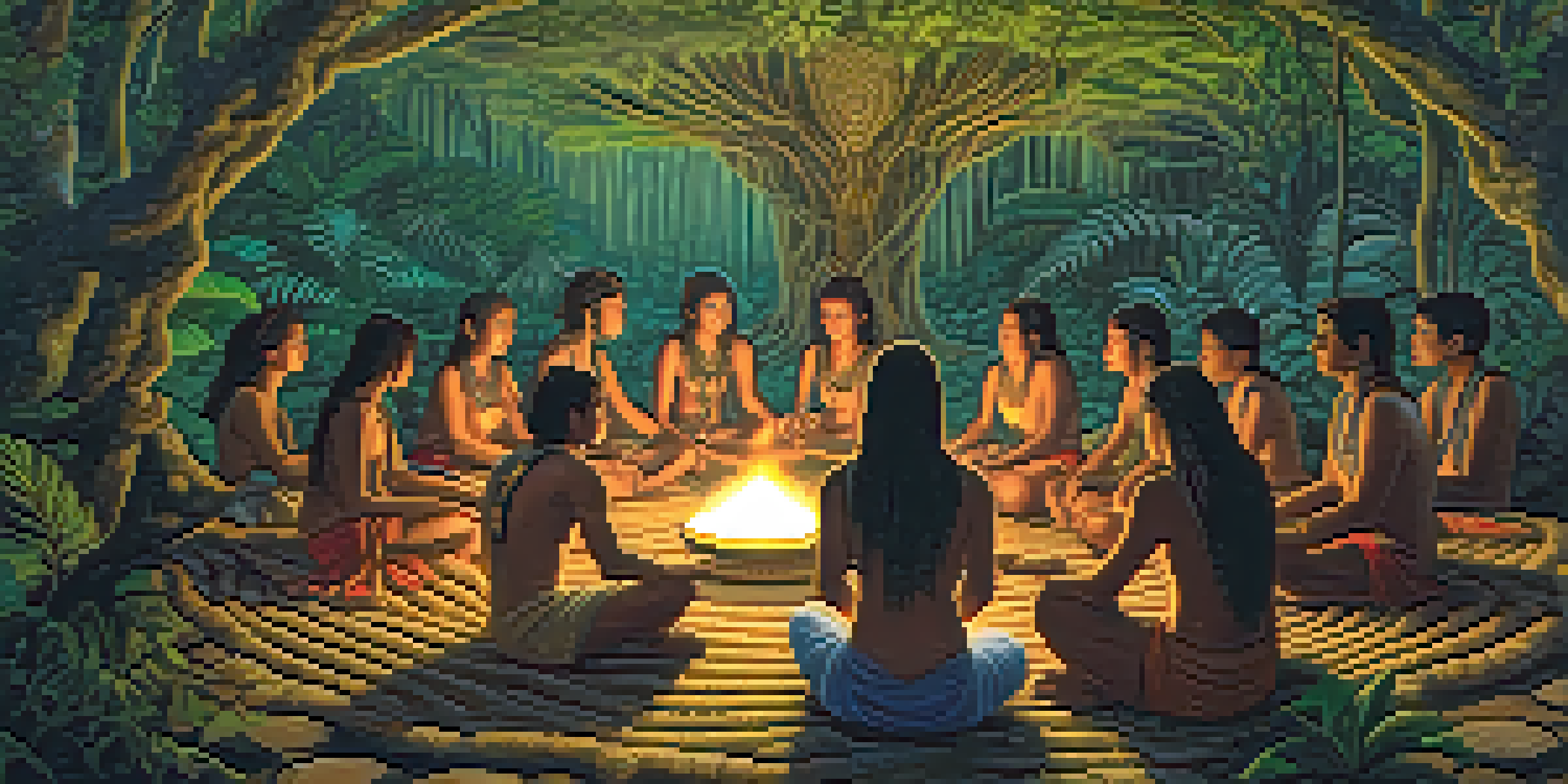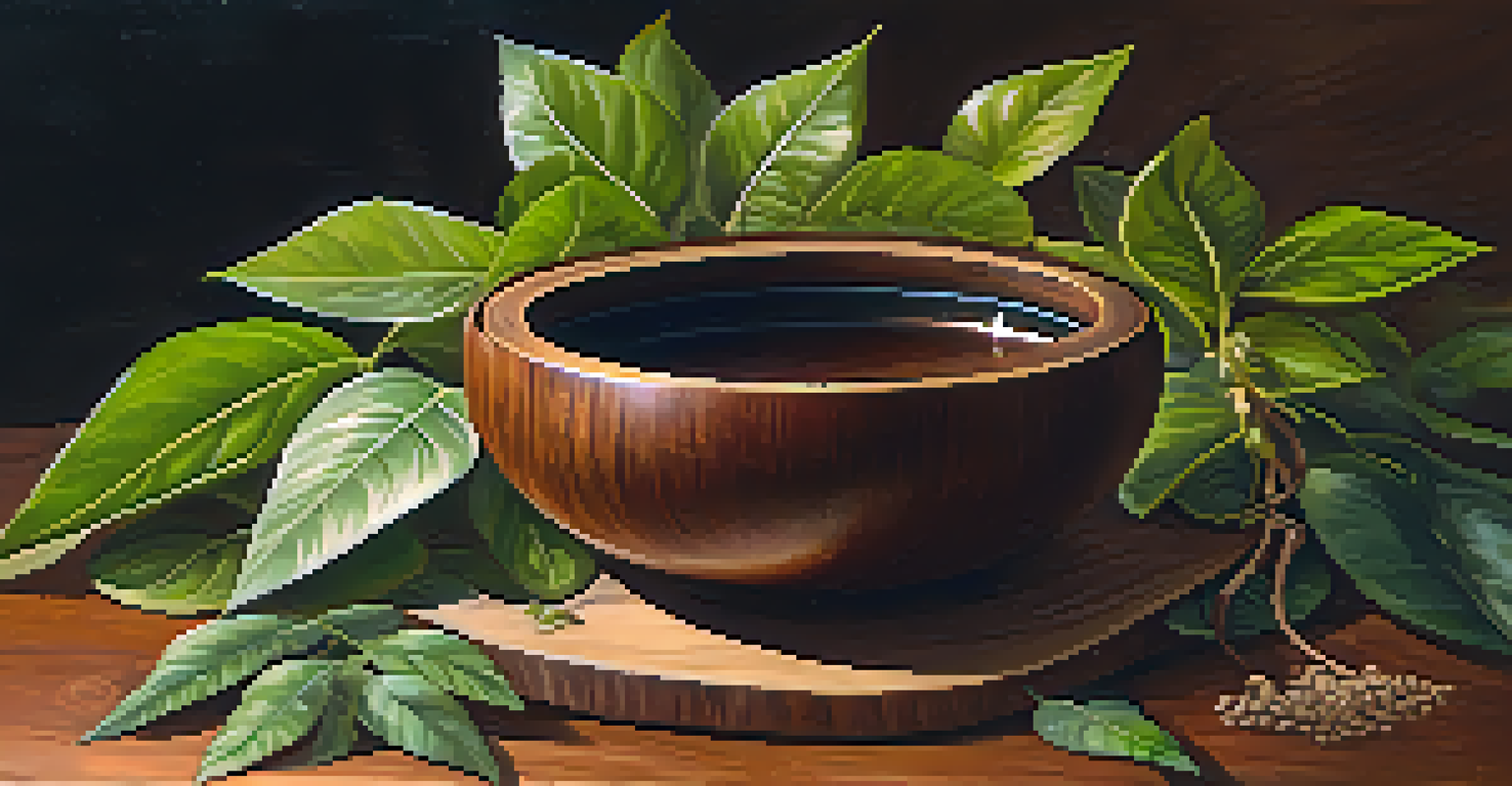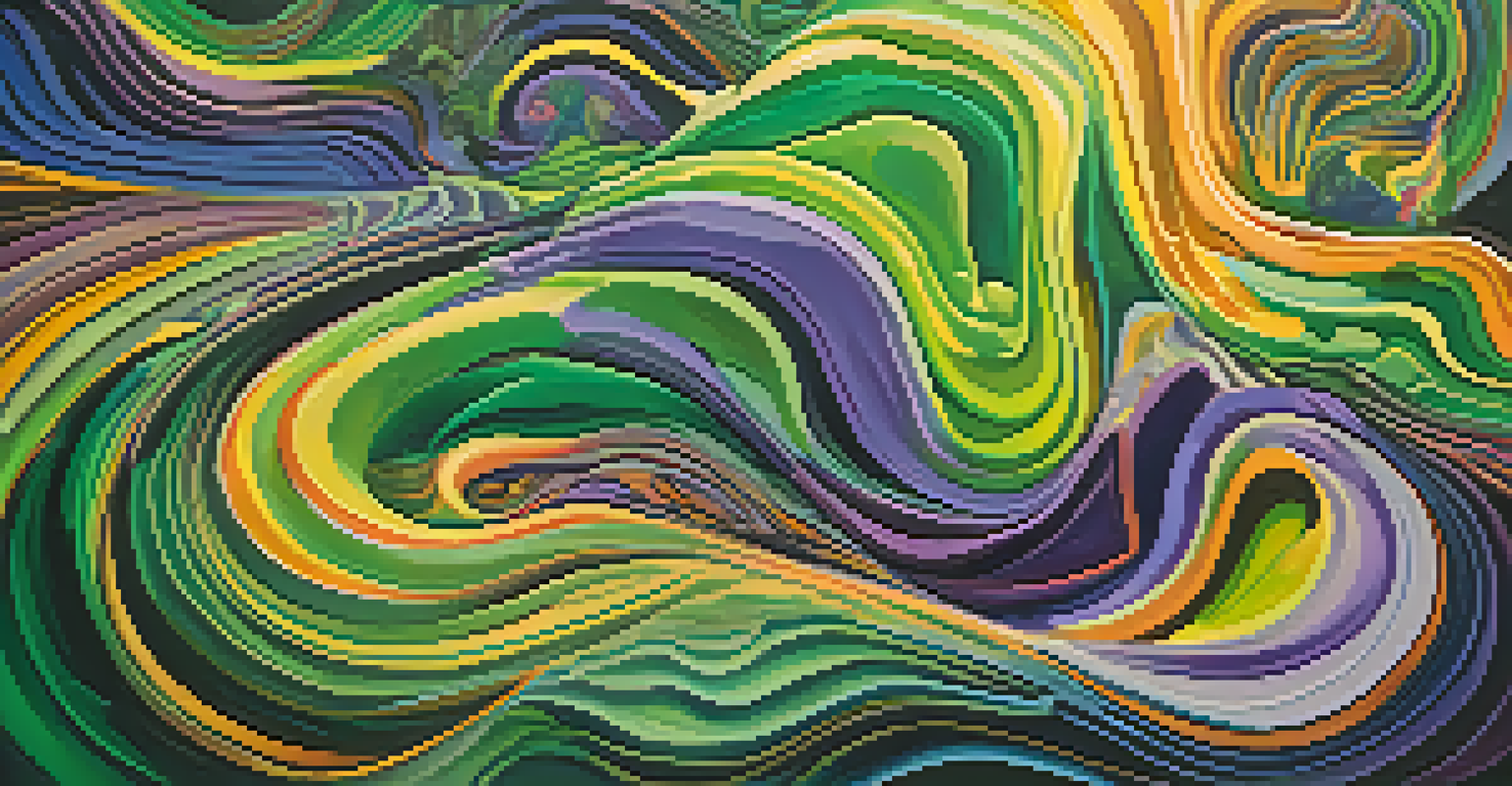Exploring Ayahuasca: A Pathway to Mystical Consciousness

What is Ayahuasca and Its Origins?
Ayahuasca is a powerful psychoactive brew originating from the Amazon rainforest. Traditionally made from the vine Banisteriopsis caapi and the leaves of Psychotria viridis, it has been used for centuries by indigenous tribes for spiritual and healing purposes. The word 'ayahuasca' translates to 'vine of the souls', highlighting its deep connection to spirituality and consciousness exploration.
The experience of Ayahuasca is not just about the visions you see but the insights you gain and how you integrate them into your life.
The preparation of this brew is not just a culinary process; it's a ritual steeped in cultural significance. Shamans, or healers, often guide ceremonies, using their knowledge to facilitate a safe and profound experience. This makes Ayahuasca not just a drink, but a doorway into a mystical dimension of self-discovery.
In recent years, Ayahuasca has gained global attention, attracting seekers from all walks of life. Many are drawn by the promise of healing from trauma, addiction, and anxiety, making it a focal point for those on a quest for deeper understanding.
The Chemical Magic: DMT in Ayahuasca
At the heart of Ayahuasca's effects is a compound called DMT, or dimethyltryptamine. Often referred to as the 'spirit molecule', DMT is known for inducing intense mystical experiences. Interestingly, when consumed in its natural form, DMT is usually broken down by the body before it can take effect, but the combination of the vine and leaves in Ayahuasca allows it to be absorbed effectively.

This chemical dance opens the door to altered states of consciousness, where users report profound insights and a sense of connection to the universe. Imagine standing at the edge of a vast ocean, feeling the waves of existence wash over you—this is often how participants describe their experiences.
Ayahuasca's Healing Potential
Ayahuasca is sought after for its transformative healing properties, helping individuals confront trauma and gain clarity.
While DMT's effects can be euphoric and enlightening, it's important to approach these experiences with respect and caution. Guided by experienced practitioners, many find that the insights gained can lead to lasting personal transformation.
The Ayahuasca Experience: What to Expect
Stepping into an Ayahuasca ceremony can feel like entering a sacred space, filled with anticipation and a hint of apprehension. Participants gather in a dimly lit environment, often surrounded by nature, creating a sense of tranquility. The ceremony typically begins with prayers and intentions, setting a purposeful tone for the journey ahead.
Healing requires a journey inward, often guided by those who understand the depths of the soul.
As the brew takes effect, sensations can range from physical discomfort to intense emotional release. Some may experience visions or vivid imagery, while others might find themselves confronted with deep-seated fears or unresolved issues. It's akin to peeling back the layers of an onion—uncomfortable at times, but ultimately revealing the core of your being.
While the journey can be challenging, it often leads to catharsis and healing. Participants commonly report feelings of interconnectedness, love, and clarity, as if they've been given a fresh lens through which to view their lives.
The Role of the Shaman in Ayahuasca Ceremonies
In Ayahuasca ceremonies, the shaman plays a crucial role, acting as a guide and protector throughout the experience. With a deep understanding of the plant medicine and its effects, shamans create a safe environment for participants to explore their consciousness. Think of them as experienced navigators, helping you traverse the uncharted waters of your psyche.
The shaman often uses traditional songs, known as icaros, to enhance the experience, invoking the spirits of the plants and establishing a connection with the participants. These songs can invoke healing energies and help facilitate the journey, much like a soundtrack that sets the mood for a movie.
Role of the Shaman
Shamans guide Ayahuasca ceremonies, using their expertise to create a safe environment and facilitate deep personal exploration.
Trust in the shaman's guidance is essential, as they help manage the dynamics of the ceremony and support participants through challenging moments. Their presence can make a significant difference in how one integrates the experiences of Ayahuasca.
Ayahuasca and Healing: A Transformative Journey
Many individuals are drawn to Ayahuasca for its potential healing properties. From physical ailments to emotional trauma, countless stories highlight the transformative power of this plant medicine. Participants often find that their experiences can lead to breakthroughs in understanding and healing long-standing issues.
Imagine carrying a heavy backpack filled with stones representing your burdens—Ayahuasca can help lighten that load. Through guided introspection, participants frequently confront their pain and gain clarity on their life’s path, enabling them to release what no longer serves them.
However, it's important to approach Ayahuasca with the understanding that it is not a magical cure-all. Integration of the insights gained into daily life is crucial for lasting change, often requiring ongoing self-reflection and support.
Cultural Appropriation and Ethical Considerations
As Ayahuasca gains popularity outside its traditional context, discussions around cultural appropriation and ethical use have emerged. Many indigenous communities view the practice as sacred, and concerns arise when outsiders seek it without understanding its cultural significance. It’s essential to approach Ayahuasca with respect and awareness of its origins.
Choosing to participate in a ceremony should involve thorough research, ensuring that the experience is conducted ethically and with the consent of indigenous practices. Supporting local communities and respecting their customs can help bridge the gap between cultures and promote a more respectful exchange.
Cultural Respect is Crucial
Engaging with Ayahuasca requires awareness of its cultural significance to avoid appropriation and ensure ethical practices.
By engaging thoughtfully, participants can honor the rich heritage of Ayahuasca while benefiting from its transformative potential. It's about finding a balance between personal exploration and cultural respect.
The Future of Ayahuasca and Mystical Exploration
As interest in Ayahuasca continues to grow, so does the conversation around its place in modern society. Many believe that exploring these mystical experiences can lead to greater personal and collective healing. The journey into consciousness is not just an individual endeavor; it can foster global awareness and understanding.
Future research into the therapeutic benefits of Ayahuasca may provide a deeper understanding of its effects and potential applications. This could pave the way for more mainstream acceptance of plant medicine in mental health treatment, much like the growing acceptance of psychedelic therapies.

Ultimately, Ayahuasca represents a bridge between ancient wisdom and contemporary exploration of consciousness. As more people embark on this journey, the hope is that it will cultivate compassion, awareness, and a deeper connection to ourselves and each other.